Conference Program
Room1
Issues, strategies and innovations driving and shaping the development and deployment of ADAS and AV technologies
09:00 - 12:25
Moderator
 Sytze Kalisvaart
Sytze KalisvaartSenior project manager
TNO
Netherlands
09:00
SUNRISE: the safety assurance framework for connected and automated mobility systems
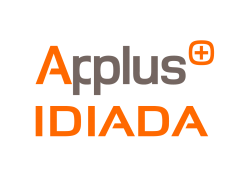 Stefan de Vries
Stefan de VriesProject manager connected and automated vehicles
Applus Idiada
Spain
Safety assurance of cooperative, connected and automated mobility (CCAM) systems is a crucial factor for their successful adoption and deployment in society. But the wide variety of individual initiatives in this field tends to silo solutions and hamper the large-scale and safe introduction of CCAM systems in our society. It is for these reasons that the SUNRISE project has been initiated. Halfway through this project, a draft version of the safety assurance framework has recently been completed, on which international vehicle safety bodies and individual CCAM experts are now invited to provide their feedback.
09:25
Deploying a safe and trustworthy AV in different markets
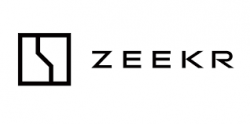 Vivetha Natterjee
Vivetha NatterjeeAutonomous vehicle safety specialist
Zeekr Technology Europe
Sweden
Now that we have removed the human from the vehicle has the AV become safer in traffic? No. We have removed the human and not the human element. But wait, is removing the human the solution? No. In fact the opposite is true, more the merrier. In Vivetha's multi-pillared approach to continuously improve and deploy safe and trustworthy autonomous vehicles, 'inclusion is key'. Data, verification and personas need to be weighed equally. Humans in our different roles (as engineers, as drivers, as traffic inspectors etc.) are to be modelled using AI in order to understand and prove safety of AV.
09:50
Are ADAS functions ready for the real world?
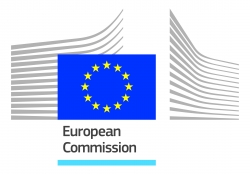 Dalia Broggi
Dalia BroggiProject Manager
European Commission
Italy
Ensuring automotive safety requires a shift from standard type-approval tests to comprehensive evaluations. This study compares traditional tests with real-world assessments by the Joint Research Centre (JRC), revealing ADAS/AD function limitations. It promotes defining Operating Design Domains (ODDs) within which the functions and systems are supposed to reach the minimum requirements. The type approval checks should consist of semi-random testing within this ODD. A proposed "robustness index" enhances reliability across diverse conditions. Market surveillance gains importance for independent testing, needing tailored protocols. This integrated approach aligns regulatory compliance with real-world safety, ensuring vehicles meet stringent standards beyond laboratory tests.
10:15 - 10:45
Break
10:45
Implementing operational design domain for real-world operation
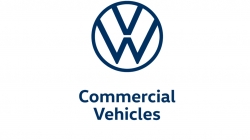 Dr Andreas Richter
Dr Andreas RichterEngineering Program Manager - Operational Design Domains
Volkswagen Commercial Vehicles
Germany
The concept of operational design domain (ODD) has been discussed in research and industry for a number of years but real-world applications beyond testing are not yet on the road. Regulations will demand a comprehensive ODD description for type approval as well as service area approval. Today’s ODD definitions are very generic and deliver only a few insights about the boundary conditions. This leads to additional efforts for explanation and showing (scenario-based) test results. Additionally, the argumentation of the completeness of the tests gets complicated. Having a technically precise but still human and machine-readable ODD definition could bridge this gap.
11:10
Leashing AI: On challenges and solutions in autonomous vehicle safety assurance
 Ali Nouri
Ali NouriSenior system safety engineer in autonomous driving
Volvo Cars
Sweden
Safe behavior of autonomous vehicles needs to be assured before being deployed on public roads and maintained safely during the operation phase. This presentation will delve into the following key aspects:
1. Autonomous Vehicle Safety Assurance and SafetyOps approach
2. Challenges toward Rapid SafetyOps, exemplified by System Theoretic Process Analysis (STPA)
3. Generative AI and Large Language Models as a Potential Solution
11:35
The UK’s ambition for connected and automated mobility technologies
 Sumit Pandey
Sumit PandeyHead of Commercialisation
CCAV
UK
The Centre for Connected and Autonomous Vehicles (CCAV) is a joint unit of the Department for Business and Trade (DBT) and Department for Transport (DfT) unit. This presentation will provide an update on UK government activities on its £100 million, commercialising connected and automated mobility (CAM) programme from 2022-25 and the UK’s future plans for CAM innovation, commercialisation, regulation and legislation. In November 2023, the UK government committed up to £150 million funding between 2025-30 for CAM R&D and early commercialisation of these technologies, whilst also ensuring these are safe and secure for all.
12:00
Accelerating the safe deployment of autonomous trucks
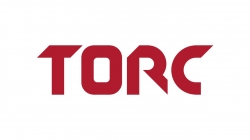 Dr Maximilian Köper
Dr Maximilian KöperSenior engineering manager
Torc Robotics
Germany
 Dr Holger Banzhaf
Dr Holger BanzhafManaging Director
DeepScenario GmbH
Germany
Deploying safe autonomous trucks requires a deep understanding of real-world driving. A key part of this process is the collection and analysis of traffic data to derive requirements, test cases and statistical distributions for safety validation. In this joint presentation, we give insights into DeepScenario’s collaboration with Torc Robotics to accelerate the safe deployment of autonomous trucks. At the core of the solution are stationary cameras combined with DeepScenario’s AI software, providing Torc with unparalleled data collection capabilities at critical locations. This allows Torc to significantly increase the efficiency of scenario mining and advance the safety of its autonomous trucks.
12:25 - 14:00
Lunch
Room1
Standards, regulations, homologation and collaboration
14:00 - 17:00
Moderator
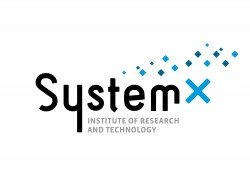 Karla Quintero
Karla QuinteroResearch engineer/research and technology coordinator
IRT SystemX
France
14:00
Recommendation for a common understanding of ISO 26262 regarding autonomous vehicles
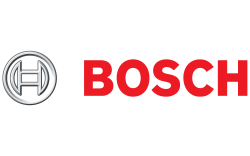 Tobias Traub
Tobias TraubFunctional safety expert
Bosch
Germany
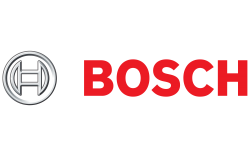 Jonas Stüble
Jonas StübleSystem architect
Bosch
Germany
Technical regulations and recommendations do not yet fully account for the safety-related availability of power supply systems. Specifically, the application of ISO 26262 on the power supply of autonomous vehicles is troublesome. Concurrently, engineers have gathered to write a recommendation (VDA 450) that facilitates the application of safe electrical power supply to other systems with safety-related availability like autonomous vehicles. This presentation highlights the framework of the VDA 450 recommendation and its principles that comply with ISO 26262 and help to ensure safe power supply for autonomous vehicles.
14:25
Automated vehicles Level 1-2-3-4-5: overview of regulation/Euro NCAP status and testing challenges
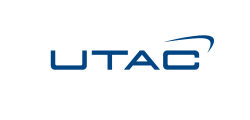 Alain Piperno
Alain PipernoSenior expert - autonomous vehicles testing and homologation
UTAC
France
UTAC is a worldwide reference in testing and type approval and an accredited lab for Euro NCAP tests and for type approval tests in France. The presentation will review today's regulation and testing capacities proposals and new challenges including Level 1-2-3-4-5 regulations status for M1 vehicles, shuttles, buses, delivery robots, SW/OTA, cybersecurity, AI and virtual type approval, and today's needs/solutions for testing and validation: physical, new protocols, new targets, rain and fog testing, digital and VIL testing, AI, V2X, cybersecurity, etc.
14:50
CAV in-use monitoring metrics development
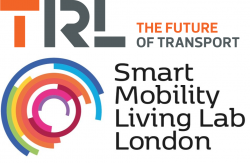 Ching-Yi Chen
Ching-Yi ChenTechnical consultant, Smart Mobility Living Lab
TRL
UK
The presentation will focus on developing comprehensive safety metrics for real-time monitoring of connected and automated vehicles (CAVs). This monitoring ensures the operational safety of CAV systems and infrastructure in automated driving, remote operation and advanced driver assistance system (ADAS) use cases. These metrics align with international safety assurance frameworks and standards for global relevance. Emphasis will be on detailed assessment methodologies to evaluate vehicle system and infrastructure performance. This critical approach feeds into the validation and verification of CAV safety arguments, facilitating safe and secure deployment.
15:15 - 15:45
Break
15:45
Germany's autonomous driving law – technical challenges and liability risks
 Benjamin von Bodungen
Benjamin von BodungenLawyer/partner
Bird & Bird LLP
Germany
Germany has recently adopted one of the most innovative legal frameworks on self-driving vehicles in the world. Yet the new law also requires compliance with extensive requirements regarding vehicle design that manufacturers, suppliers and the engineering community must be aware of. The presentation will place particular emphasis on these technical challenges. For instance, autonomous vehicles must be equipped with systems for mastering dilemma situations that prioritize the interests at stake in the event of an unavoidable accident. Manufacturers also have to ensure safety against cyberattacks throughout the entire vehicle lifecycle. Non-compliance bears significant risks of civil or even criminal liability.
16:10 - 17:00
Panel Discussion - Building an integrated toolchain for safe & confident deployment of autonomous vehicle and ADAS technologies
 Ali Nouri
Ali NouriSenior system safety engineer in autonomous driving
Volvo Cars
Sweden
 Phil Durston
Phil DurstonTechnical manager Volkswagen vehicle development: proving grounds AD strategy
Volkswagen AG
Germany
 Benjamin Engel
Benjamin EngelChief Technology Officer (CTO)
ASAM eV
Germany
 Alexander F Walser
Alexander F WalserManaging Director
Automotive Solution Center for Simulation e.V.
Germany
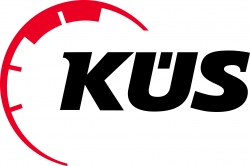 Thomas Tentrup
Thomas TentrupDirector of R&D
KÜS Bundesgeschäftsstelle
Germany
 Karla Quintero
Karla QuinteroResearch engineer/research and technology coordinator
IRT SystemX
France
Room 2
Advances in software, AI, architecture and data management.
09:00 - 17:00
Moderator
 Chris Reeves
Chris ReevesHead of CAV Technologies
HORIBA MIRA Ltd
UK
09:00
Ensuring vehicle software quality in an autonomous and V2X ecosystem
 Nishant Khadria
Nishant KhadriaDirector
Deloitte
Germany
Modern vehicles are no less than 'smartphones on wheels'. The huge growth in in-vehicle functionalities demands increased and continuous connectivity while regulatory requirements mandate extensive testing and cybersecurity. The situation is intensified by ecosystem partners ranging from 'steel to software' and 'simulation to street'. As the cost ratio of software to whole vehicle rises, efficient 'software quality' becomes crucial to manage costs, win market share and achieve early compliance. The presentation proposes a process- and product-based software quality framework in an autonomous and V2X environment through qualitative measurement of customizable KPIs through assessments and tests.
09:25
Chasing milliseconds: how we optimized in-vehicle OS boot time
 Dustin Black
Dustin BlackSenior principal performance engineer
Red Hat
Germany
The presentation will take you on a technical journey through some of the challenges of adapting a general-purpose Linux OS to an embedded automotive use case with strict regulatory and safety requirements. Extra seconds of boot time are hardly noticeable or impactful for servers with hundreds of days of uptime, but for a platform rebooted many times in a day and that must provide user interaction in seconds from power on for safety reasons, suddenly every CPU cycle is under the microscope.
09:50
Scalable software development addressing different levels of autonomy
 Georg Kuschk
Georg KuschkDirector of perception
Plus
USA
The presentation will cover common software architecture for different autonomy levels, how the development and deployment of products at different autonomy levels benefit each other, and examples and lessons learned from Plus’s deployments in Europe, the US and Australia.
10:15 - 10:45
Break
10:45
Accelerate AV development with data-driven automotive AI
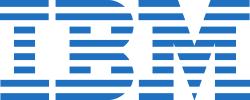 Frank Kraemer
Frank KraemerSystems architect
IBM Germany
Germany
Developing AVs is a time-intensive and complex process that requires best-in-class data and AI training infrastructure. Companies developing software-defined vehicles need to accelerate time-to-market and minimize costs without sacrificing safety. Combining vehicle sensors, map data, telematics and navigation guidance using machine learning and data fusion techniques, data-driven development is not without its challenges. One of the biggest challenges is data collection and integrity, as data needs to be collected accurately and consistently to drive accurate decisions.
11:10
Journey toward software-defined connected and autonomous vehicles (SDCAV)
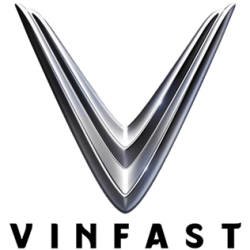 Plato Pathrose
Plato PathroseCTO and technical director ADAS and automated driving
Vinfast Germany
Germany
The presentation will discuss the roadmap toward software-defined vehicles. What does a software-defined connected and autonomous vehicle look like and what are the requirements to design and deploy those vehicles? It will also cover the requirements and design considerations that are taken into account for vehicle architecture and various vehicle components. The change in approaches to the development, testing and production of the vehicles will be discussed. The drastic migration toward utilizing new technologies for the service and maintenance phase planned for such vehicles will be discussed.
11:35
SDV and vehicle motion management
 Dirk Bangel
Dirk BangelChief expert
Robert Bosch
Germany
The presentation will show how vehicle motion management, a software system solution from Bosch for the complete vehicle motion domain, helps to drive the transformation toward software-defined mobility through multi-actuator control, a modular and scalable software architecture that simplifies the separation of hardware and software, centralized computing and standardized interfaces.
12:00
How generative AI will transform ADAS/AD
ADAS/AD Lead Architect
Microsoft
United Arab Emirates
The session focuses on the application of Generative AI for the testing and validation of ADAS/AD use cases. We will look at how OEMs and Tier 1s are using Large language models and enriching computer vision models to build , test and develop perception models quicker. Finally we will delve in the new Microsoft Azure AI building blocks that enhance training and inference of these AI models.
12:25 - 14:00
Lunch
Moderator
 Frank Kraemer
Frank KraemerSystems architect
IBM Germany
Germany
14:00
How does the law on AI influence autonomous driving?
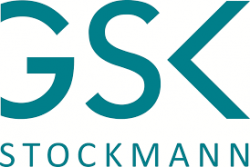 Jörg Kahler
Jörg KahlerPartner
GSK Stockmann
Germany
The EU Parliament adopted the AI Act: the world’s first legal framework for AI. Stakeholders in the sector of autonomous driving technologies should familiarise themselves with the provisions of the new law and check if and to what extent the legal framework is relevant to their business model.
14:25 - 15:15
Panel Discussion - Safe AI for Automated Driving: Reality or Fiction?
The current hype around ChatGPT and Large Language Models (LLMs) has increased the focus on the need for regulating Artificial Intelligence (AI) (UK’s Global AI Safety Summit (Nov 2023) & US Govt’s Executive Order on AI). AI algorithms which are non-deterministic form a fundamental part of any Automated Driving System. Using non-deterministic algorithms in safety critical systems like Automated Driving require new approaches to safety argumentation & their regulation. This panel session will bring diverse AI approaches in AD development & diverse regulatory approaches to identify both the need and feasibility of regulation & developing safe AI.
 Dr Siddartha Khastgir
Dr Siddartha KhastgirHead of Verification & Validation, Intelligent Vehicles
WMG, University of Warwick
UK
 Richard Damm
Richard DammPresident
KBA
Germany
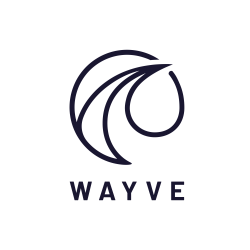 Dr Sarah Gates
Dr Sarah GatesDirector of public policy
Wayve
UK
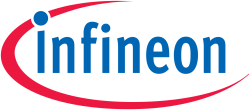 Georg Stettinger
Georg StettingerSenior project manager R&D funding department
Infineon
Germany
15:15 - 15:45
Break
15:45
Accelerating Software Defined Vehicles through Open Source
 Dan Cauchy
Dan CauchyExecutive Director
Automotive Grade Linux
USA
The concept of a software-defined vehicle (SDV) has become a hot topic across the industry as automakers look for ways to address the dramatically growing complexity of developing and deploying software while simultaneously building the foundation for self-driving vehicles. Automotive Grade Linux (AGL), an open source software platform for connected car technology, has been working on software-defined vehicles for the past eight years.
Dan Cauchy, Executive Director of AGL, will discuss the current state of SDVs and the work being done by automakers and Tier 1s as part of the AGL SDV Expert Group. He’ll also provide insight into the driving trends behind SDVs and enabling technologies including virtualization, containers, and the cloud.
16:10
What’s ahead for ADAS computing?
 Guilherme Marshall
Guilherme MarshallDirector, ADAS GTM
Arm
UK
Most computational capabilities that will power vehicles starting production in 4-5 years have already been designed in. For a fast-moving software function such as automated driving, this is massive challenge. Thus, in the absence of a crystal ball, Arm builds on close collaborations with leading automotive OEMs and suppliers to define next-generation compute platforms. This presentation will discuss their challenges and how upcoming technologies will help enable more efficient ADAS/AD software innovation.
16:35
Relevance of explainable AI and AI compliance for scaling AV fleets
 Lucas Bublitz
Lucas BublitzPrincipal autonomous vehicle
P3 Automotive GmbH
Germany
The commercialization of AVs in San Francisco defined a new phase, as the maturity of technology is now proven at small scale. But scaling AVs requires an overall understanding of the occurrence of errors and their impact on decision making or misbehavior, as faults and failures can lead to a decrease in safety and confidence in AVs. It underlines the relevance of adopting the methods of explainable AI and applying conformity to the upcoming AI regulation. Transparency in self-driving systems ML/DL black boxes is essential for the operation and therefore the scalability of AI-enabled self-driving systems.

